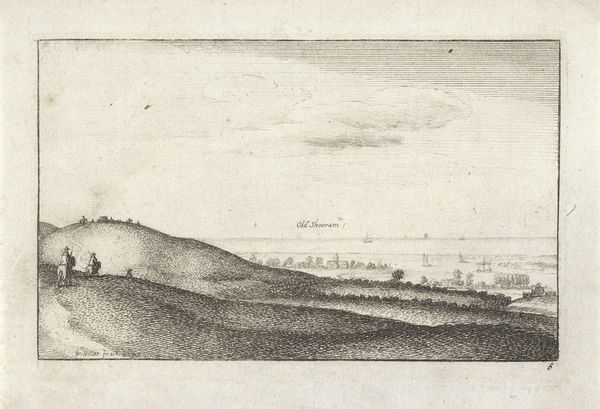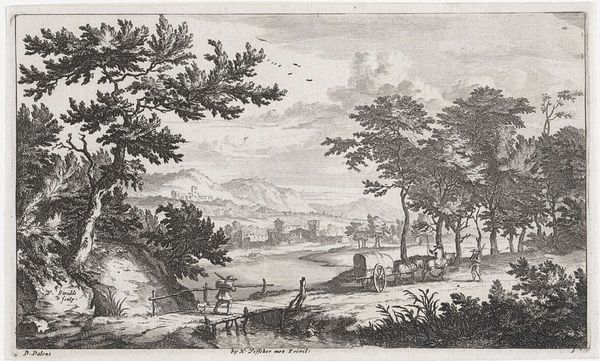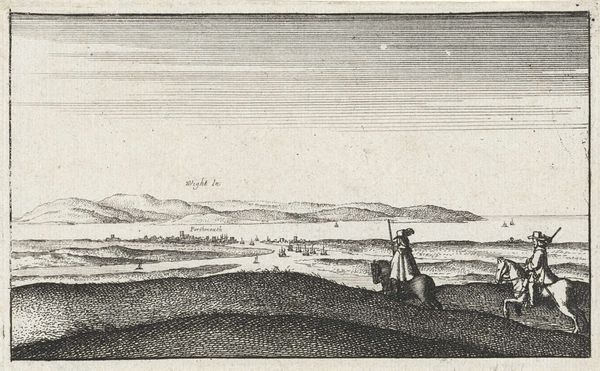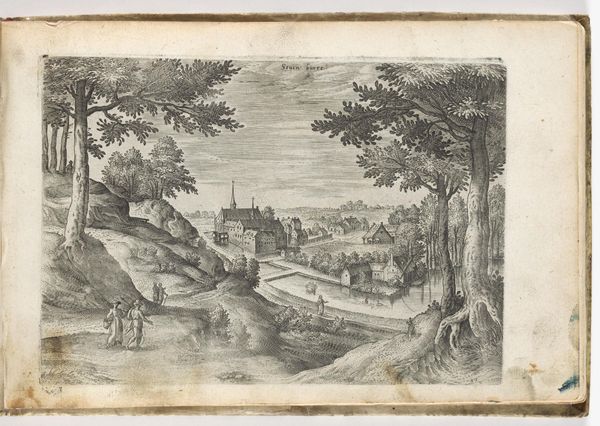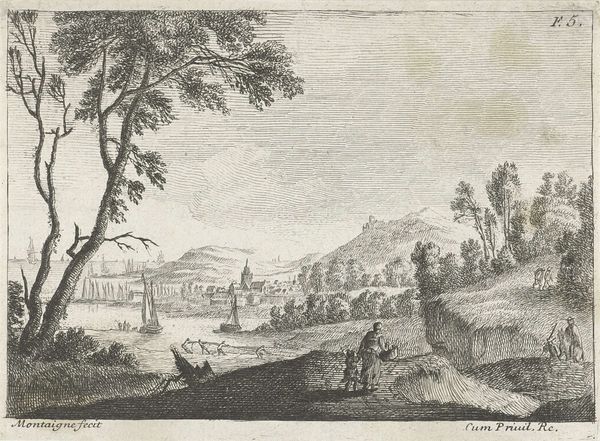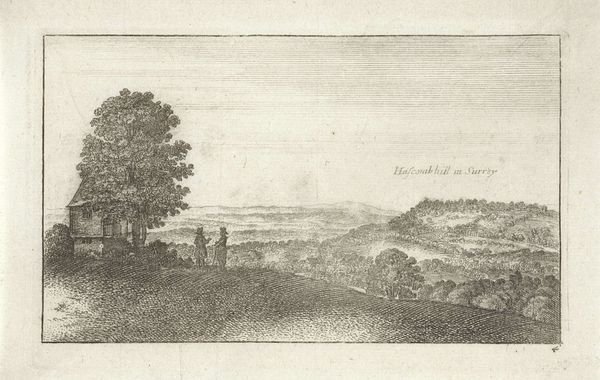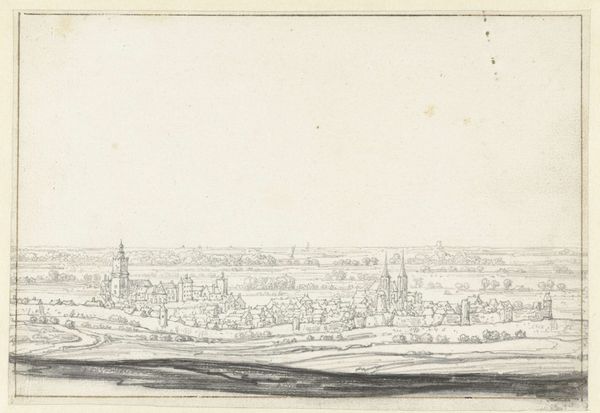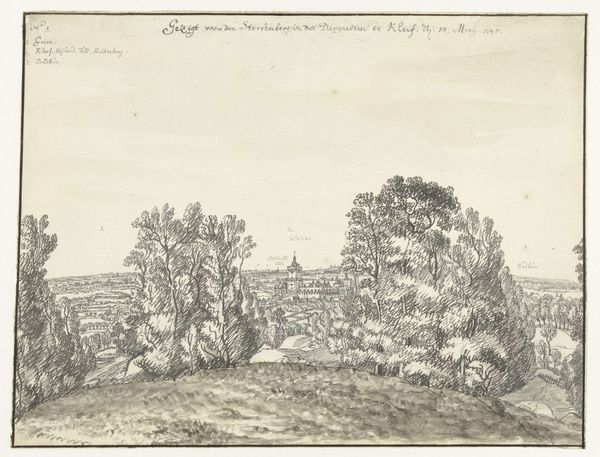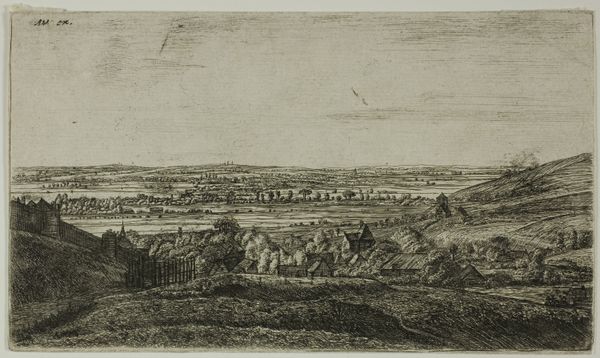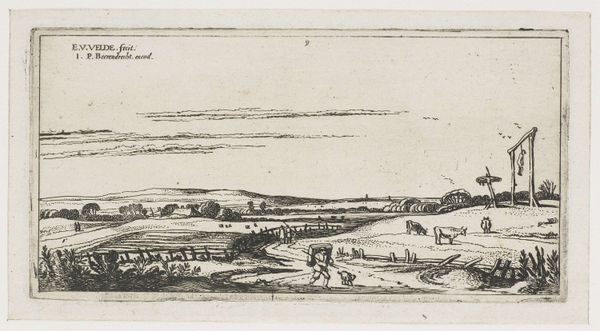
drawing, print, etching, paper
#
drawing
#
baroque
# print
#
etching
#
landscape
#
paper
#
cityscape
#
history-painting
Dimensions: 147 × 419 mm
Copyright: Public Domain
Editor: This is Wenceslaus Hollar's "Greenwich," an etching from 1637. It's such a detailed landscape. I'm curious, what do you see when you look at this cityscape? Curator: The eye is immediately drawn to the strategic placement of symbolic elements. Notice how Greenwich Palace, prominently positioned on the hill, isn't just a structure, but a statement of royal power overlooking the city. But what about the two women in the foreground, seemingly caught between the palace and the city? Editor: They almost seem like they’re contemplating which direction to go. I didn’t immediately connect that to any larger symbolism, though. Curator: Precisely. Their positioning hints at the societal role of women in that era – perhaps arbiters of taste and social standing, mediating between the private sphere of the palace and the public life of London. Does the clarity of the architectural detail of Greenwich juxtapose the implied dynamism of the growing urban sprawl in London? Editor: Now that you mention it, there is such a sharp contrast between them. And knowing this was created during the Baroque period adds another layer. Curator: Indeed. The Baroque valued clarity but loved theatrics. Think how landscape became infused with politics and ideology. It served as a backdrop against which the drama of power unfolded, capturing England’s cultural memory. Editor: That's fascinating. I initially saw it as just a cityscape, but now it feels packed with meaning about social structure and historical context. I'll never look at a landscape the same way! Curator: Art like this offers a window into past perceptions, showcasing cultural continuity and revealing echoes of enduring social dynamics, prompting us to question what endures.
Comments
No comments
Be the first to comment and join the conversation on the ultimate creative platform.
